Nessebar Architectural, Historical and Archaeological Reserve – a unique cultural and historical phenomenon with the status of a UNESCO site
- Stefan Ivanov

- Sep 21
- 20 min read
Nessebar is not just another Bulgarian village.
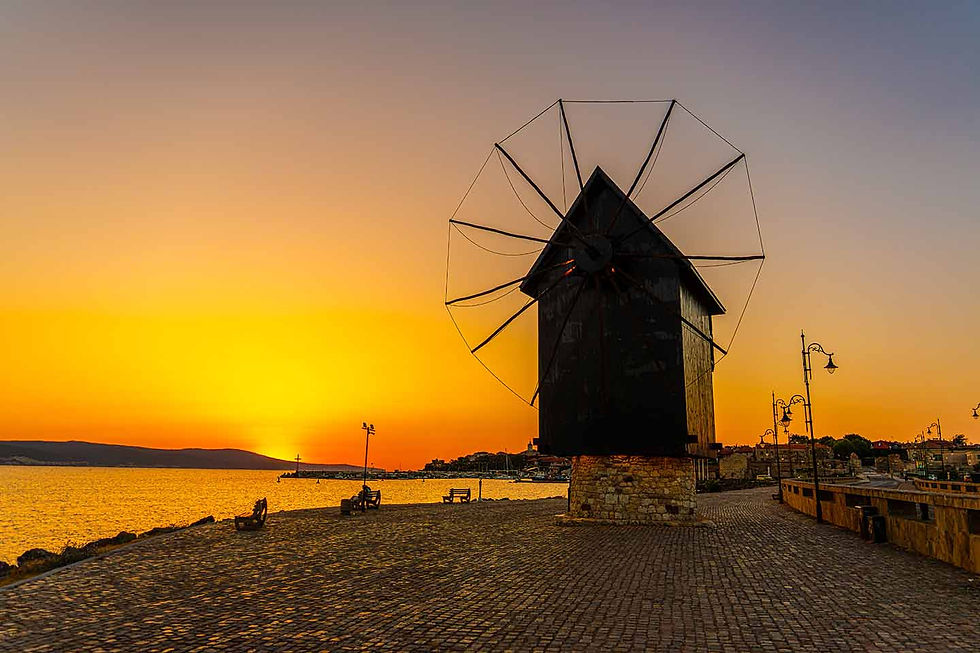
Nessebar is a legend!

A legend that tells us its story with every step we take along its narrow, winding cobblestone streets, with every stone, behind every corner, from every wall of every ruin and from every window of every old wooden house.

Nessebar is not just for sightseeing.

Nessebar is an experience!

I close my eyes...
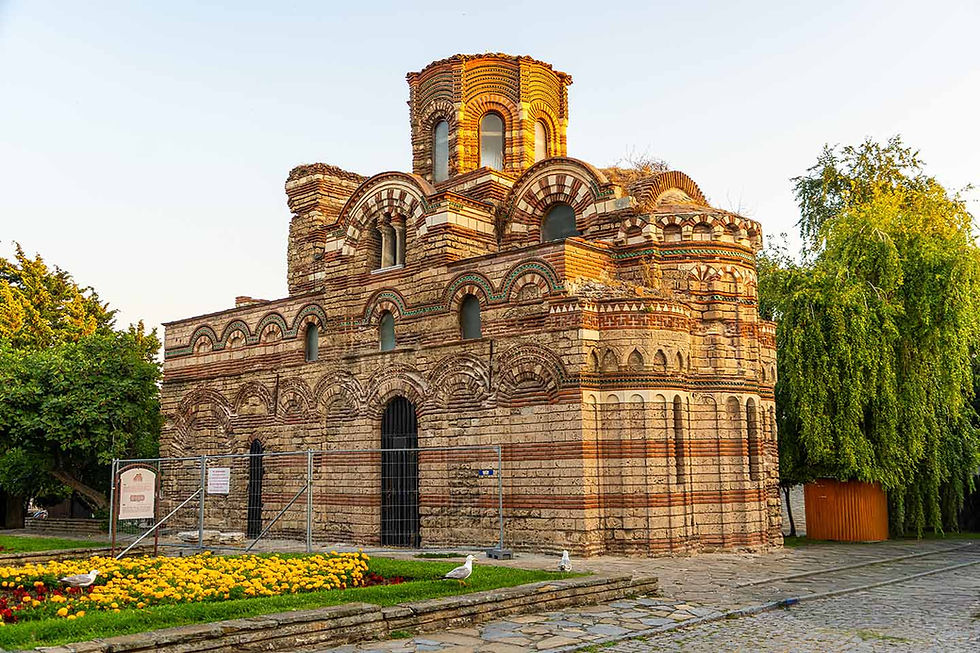
I listen to the sea breeze and the song it brings...

A song whispering of bygone eras...

I breathe in the scent of the salty sea air...

I can smell the aroma of ripe grapes, the smell of figs, of freshly baked bread...

I listen to the voices of the crowd of tourists...

But I seem to hear the echo of the bustle of the former merchants and sailors, entering and exiting through the large fortress gates of the settlement, overloaded with goods - expensive fabrics, precious stones, exquisite ceramics, gold, silver, exotic foods and animals, tobacco and weapons...

I am struck by the roar of the sea waves crashing on the Nessebar coast, just as they did millennia ago...

It's as if I hear the rumble of the footsteps of the warriors who guarded the old fortress walls...

I feel the warmth of the sun on my skin...
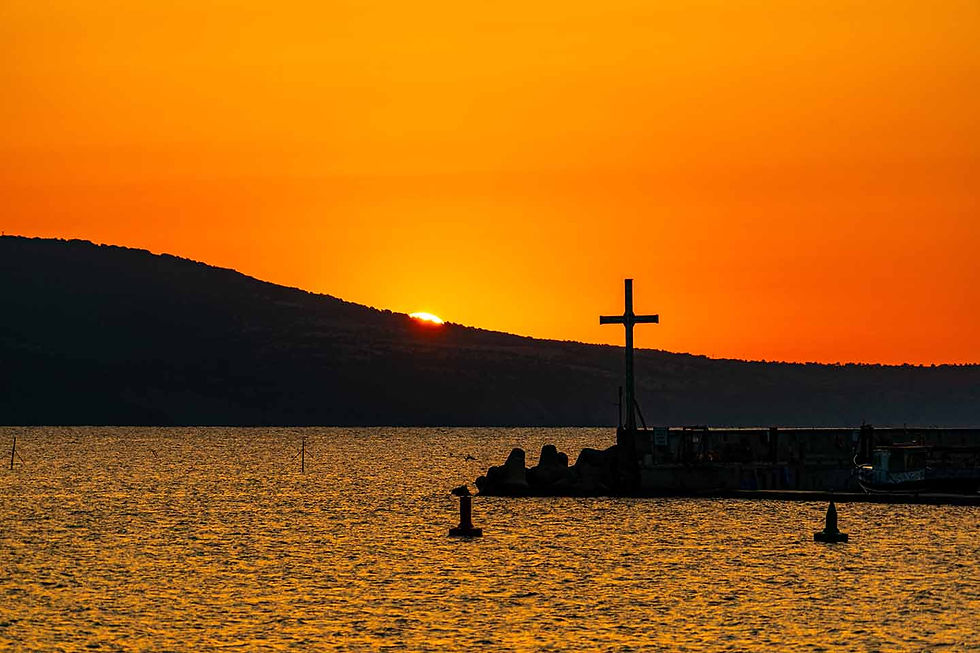
I open my eyes and look at the boundless blue sea...

The sea – the same constant witness! An unchanging, persistent and continuous eyewitness, observing the greatness of Thracians, Greeks, Romans and Bulgarians.
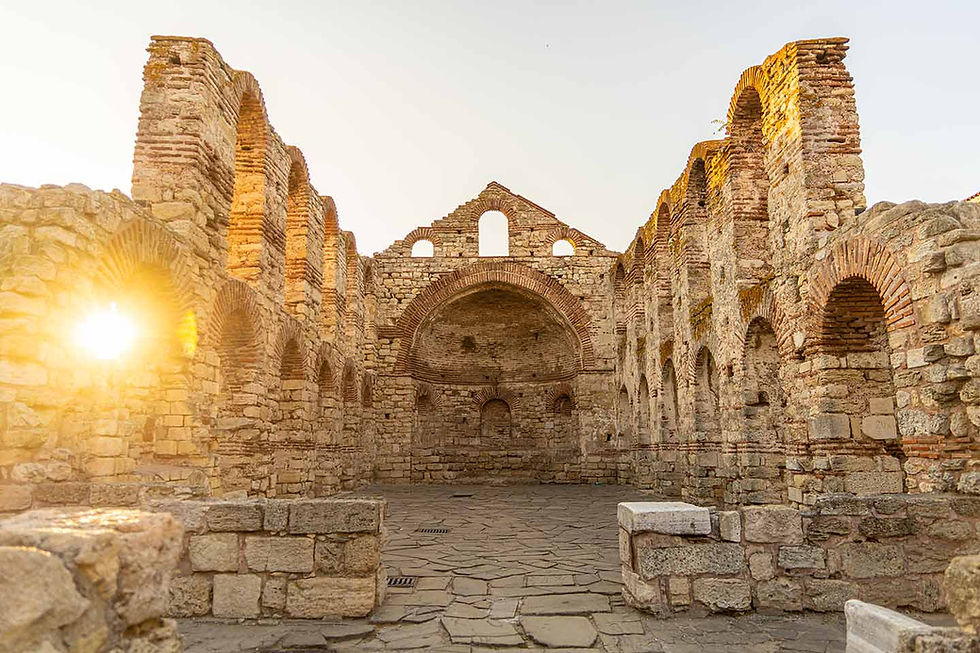
I meet the churches of Nessebar!

The churches of Nessebar – the beating hearts of the ancient city, beating through the centuries! A living history woven from faith, suffering and hope.
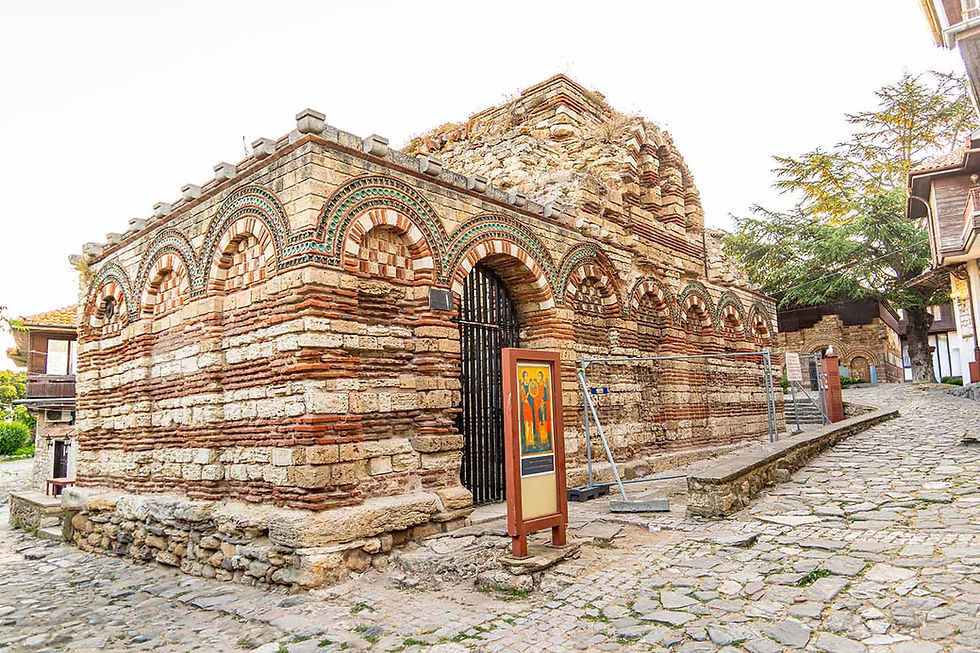
Every church is like an open book of time, telling its own unique story. Their walls, built of stone and red bricks, bear the imprint of every era, every event and every destiny. They are witnesses of rise and fall, of joy and sorrow, of the constant human struggle in search of spirituality. In search of God!

I touch these old things and feel a deep, almost mystical feeling. The air around them is filled with a silence and awe that transports you back in time. I imagine the prayers that were said, the tears that were shed, and the hopes that were shared in these long-forgotten places.

The churches of Nessebar are not just another monument! They are an emotional bridge between the past and the present. They remind us that faith is eternal, that spirituality is something that connects us and gives us strength. They are a refuge where you can find peace and touch something special.

Every church in Nessebar is a work of art, telling the story of faith that has withstood the vicissitudes of time!

Every old wooden house with a stone foundation and a curved bay window is like a postcard sent from the past, transporting us to a simpler and more peaceful time.

Nessebar is not just a trip.

Nessebar is a touch to the heart of history!

Nessebar is a vibrant emotion that will make you fall in love!
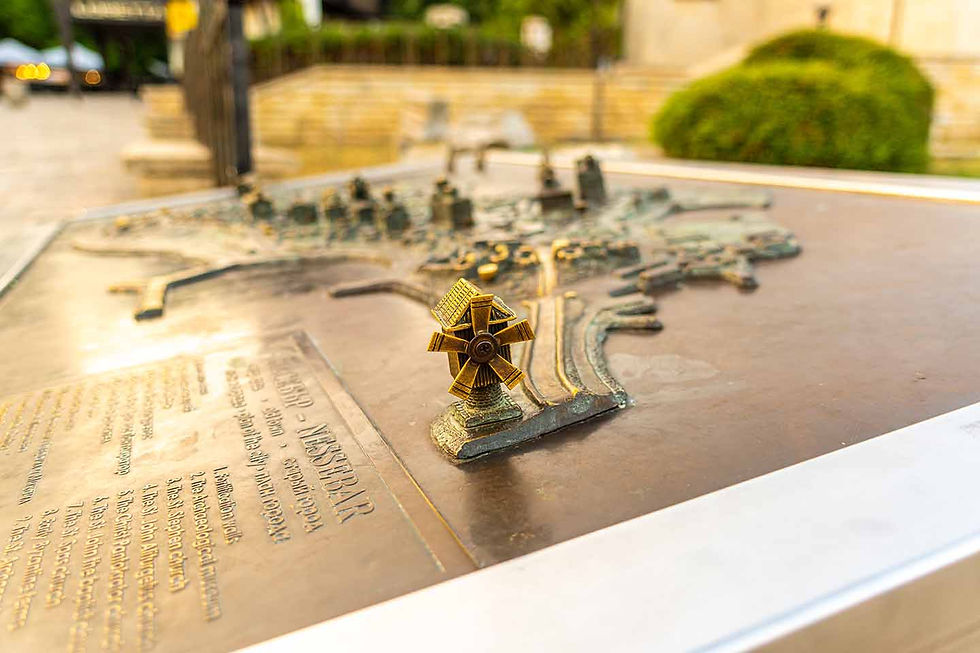
Nessebar is like an old book that invites us to leaf through its pages and discover stories about past civilizations, about greatness, about downfalls, about love and hope, about glorious sea battles, about rulers and navigators, about writers and artists, about builders and scientists! About life!

Nessebar is a kind of palimpsest!

The term palimpsest comes from ancient Greek and literally means scraped over again.

A palimpsest is an ancient manuscript written on parchment from which the previous text has been erased by scraping or washing. In the past, parchment was a very expensive and difficult-to-find material, so often when a text became unnecessary or needed to make room for a new one, the old one was removed and the parchment was reused.

Despite the erasure, traces of the original text usually remain. Today, with the help of modern technologies such as ultraviolet and multispectral imaging, scholars are able to decipher and restore a large part of these lost texts, which are often extremely valuable for history and science.

In a figurative sense, the word palimpsest is used to describe something that contains traces of different eras and layers that accumulate one on top of the other.

That is why I take the liberty of comparing the Ancient Town of Nessebar to a palimpsest, because it contains cultures and histories spanning thousands of years.

Look at the old defensive fortress walls built by the Thracians, with Roman and Byzantine layers visible on top, and medieval Bulgarian architecture on top of them. All of this exists simultaneously, telling a multi-layered story.

Nessebar is like a palimpsest - every new story, every new emotion is superimposed on the previous ones, but does not completely erase them, but leaves their traces and imprints on them.

Nessebar is a palimpsest!

On that magically enchanting early July morning, when the sun kissed the graceful curves of the Balkans, I unrolled this palimpsest!
What did he tell me? What secrets did he reveal to me? What did he share with me?
Come with me!
I will reveal to you the innermost secrets of Nessebar!

It is no secret to anyone that the Ancient Town of Nessebar, located on a small rocky peninsula on the Bulgarian Black Sea Coast, is a unique cultural and historical phenomenon!

It is connected to the mainland by a narrow isthmus, approximately 400 meters long. Today the peninsula extends about 850 meters long and about 300 meters wide, occupying an area of 250 acres. This natural geography has predetermined its strategic importance and has allowed the city to develop as one of the oldest continuously inhabited settlements in Europe, with a history stretching back more than 3,200 years.

Nessebar is not just a geographical point, but a space-time continuum in which every layer of the earth and every wall tells the story of the centuries.
Nessebar as a living chronicle and an open-air museum
I view this settlement as a living chronicle of the civilizations that have built and inhabited it over the millennia and as a kind of open-air museum.

Its architecture and archaeology reveal clearly distinguishable but coexisting layers left by Thracians, Greeks, Romans, Byzantines, Bulgarians, and Ottomans.

This layering of cultures has created a unique blend of architectural styles, where ancient temples, medieval fortress walls, and Bulgarian Renaissance houses coexist in harmonious unity.

This extraordinary multi-layeredness turns the entire Old Town into a large-scale open-air museum.

I walk the streets, immersed in a continuous succession of historical eras, which gives the city a sense of authenticity and depth that goes beyond the ordinary tourist destination.
UNESCO Recognition
Due to its exceptional cultural and historical value, the Old Town of Nessebar was inscribed on the UNESCO World Heritage List in 1983.
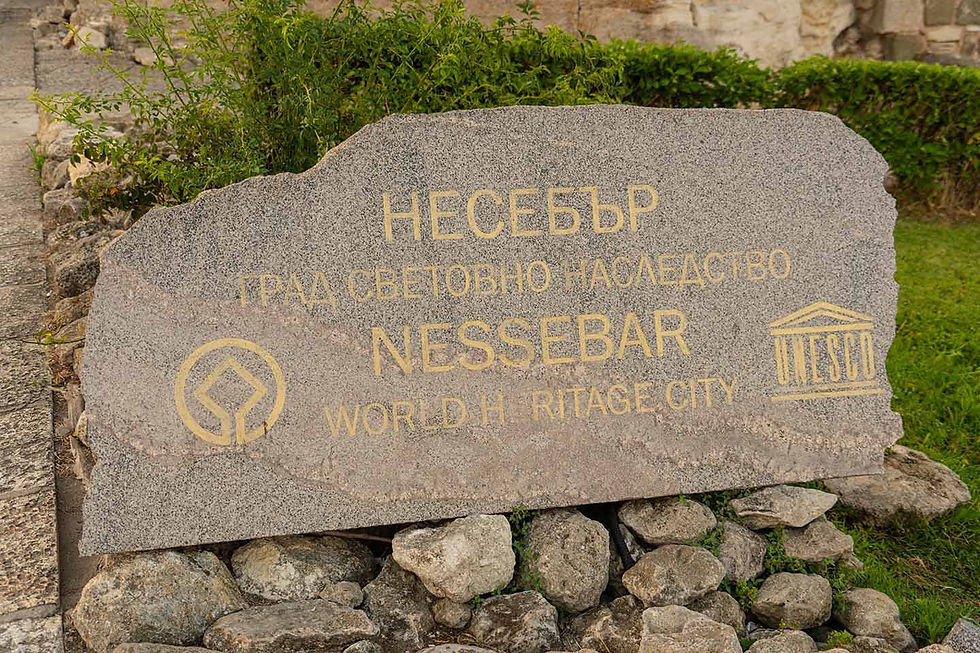
This international recognition is not just an honorary title, but a confirmation that the architectural landmarks, well-preserved medieval architecture, and historical significance of the city are of common importance to all humanity.

The registration file, registered under number 217bis, emphasizes the role of Nessebar as the pearl of the Black Sea and a valuable part of the Bulgarian and world cultural heritage.
Layers of civilizations
The history of Nessebar can be traced as a continuous chronological chain, in which each civilization builds on and adapts the legacy of the previous one, leaving its own visible mark.

This continuity is one of the key aspects determining its universal value.
Thracian roots
The first fortified settlers on the peninsula were the Thracian tribe of Menabria, who founded the settlement called Menabria (Menabria/Mesambria) as early as the 3rd – 2nd millennium BC, or at the latest in the 8th century BC.

This early habitation on the rocky peninsula is a direct consequence of its natural protection, which provided favorable conditions for a fishing village and was the basis of its future urban evolution.
Ancient Greek polis
At the beginning of the 6th century BC, the city was colonized by Greek settlers from Megara.

They transformed the Thracian settlement into a thriving polis, which quickly acquired strong fortification walls, temples, an amphitheater, and bustling workshops.

The Greek heritage is still evident in the archaeological layers that testify to the high level of urbanization and organization of the city during this period.
Roman and Early Byzantine Domination
After being conquered by the Romans, the city retained its importance and became an important economic and military center, a commercial competitor to neighboring Apollonia - today's Sozopol.

After the division of the Roman Empire, Mesembria became a key city within the Eastern Roman Empire (later – Byzantium).

During this period, new and larger fortifications were built, and the city became a center of early Christian culture on the Balkan Peninsula.
Bulgarian-Byzantine clashes
During the Middle Ages, Nessebar became the site of constant military clashes between Bulgaria and Byzantium.

The city was conquered by Bulgarian rulers such as Khan Krum in 812, who destroyed the defensive fortress wall, Tsar Simeon the Great, who conquered it in the period 894–904, and Tsar Ivan Alexander, who reconstructed it for the last time.
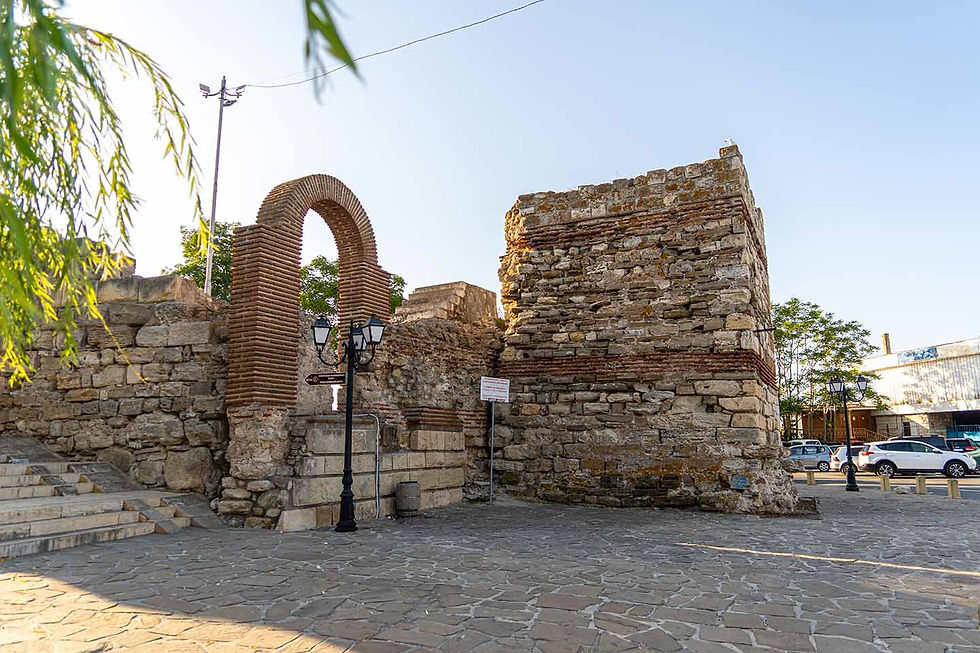
These periods of conflict and subsequent reconstructions are a direct cause of the layering of architectural layers in the fortress walls, which leaves visible traces of different eras and construction techniques. This dynamic not only reflects political instability, but also demonstrates the exceptional strategic value of the city, which has always been a key target for both empires.
Ottoman rule and the Bulgarian Renaissance
After falling under Ottoman rule in 1453, Nessebar lost its military-strategic importance.

Despite becoming a secondary settlement, the local Bulgarian community managed to preserve its language, traditions, and religion, turning the city into a center of the spiritual and cultural life of the region.

During this period, the characteristic Bulgarian Renaissance wooden houses in the Black Sea style also appeared, which today are an integral part of the appearance of the Old Town.

This historical circumstance demonstrates that the cultural and historical heritage of Nessebar is not just a collection of monuments, but a living, adaptive organism that has played a key role in preserving national consciousness during difficult times.
Modern era
In 1956, the city was declared an architectural and archaeological reserve, which was a crucial step for its preservation and future development.

This national protection became a prerequisite for the international recognition that Nessebar received in 1983 with its inscription on the UNESCO World Heritage List.
Nessebar as a UNESCO World Heritage Site
Inscription on the UNESCO World Heritage List is not based on the simple historical age or beauty of a given site, but on its Outstanding Universal Value.
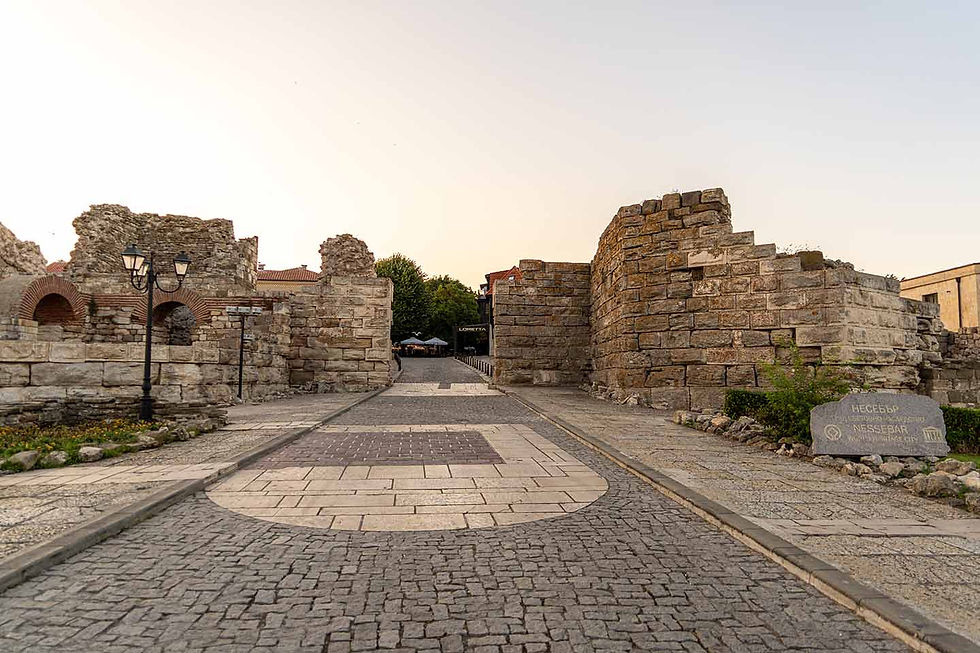
This value is defined as cultural and/or natural significance that is so exceptional that it transcends national boundaries and is of common interest to present and future generations of all humanity. Therefore, the ongoing protection of this heritage is of paramount importance to the international community as a whole.
Justification for inscription
The inscription of Nessebar in 1983 was based precisely on this concept. Its justification lies in the rich and multi-layered history, the well-preserved medieval architecture and the unique blend of cultural layers that create a one-of-a-kind environment.

The city is recognized as a remarkable example of the harmonious coexistence of different eras and cultures within a limited geographical area.
International commitments and monitoring
By including Nessebar on the list, Bulgaria is committed to ensuring its permanent protection. UNESCO, through its World Heritage Committee and World Heritage Centre, constantly monitors the condition of the site, especially with regard to its authenticity and integrity. If the universal value of the site is threatened, there is a procedure for its inclusion on the List of World Heritage in Danger or even for its exclusion from the list if the value is irreversibly impaired.
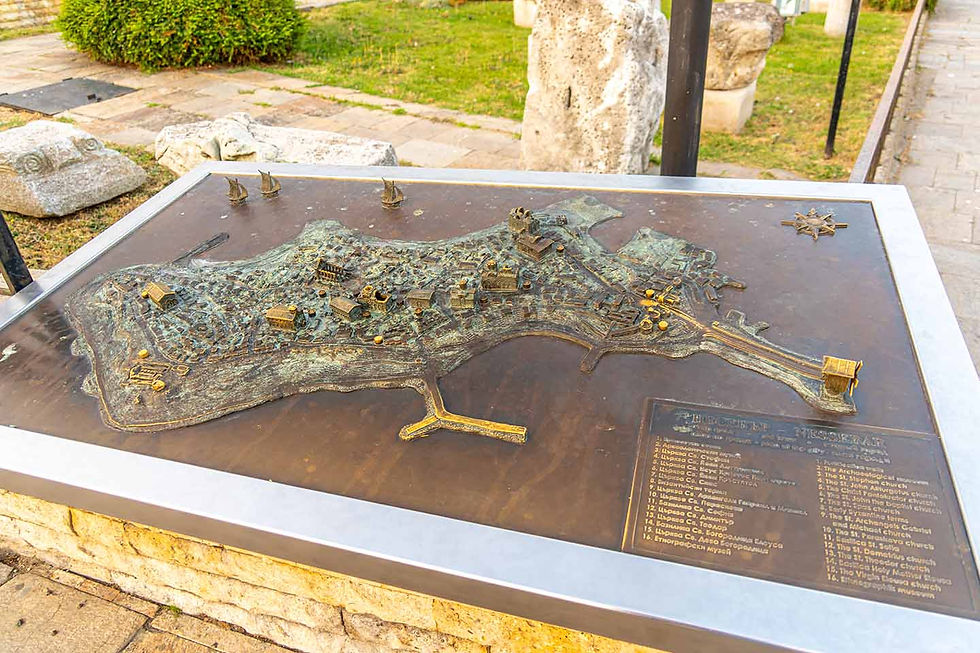
This monitoring procedure emphasizes that UNESCO status is not just an honorary title, but imposes strict conservation requirements that must be respected by the Member State.
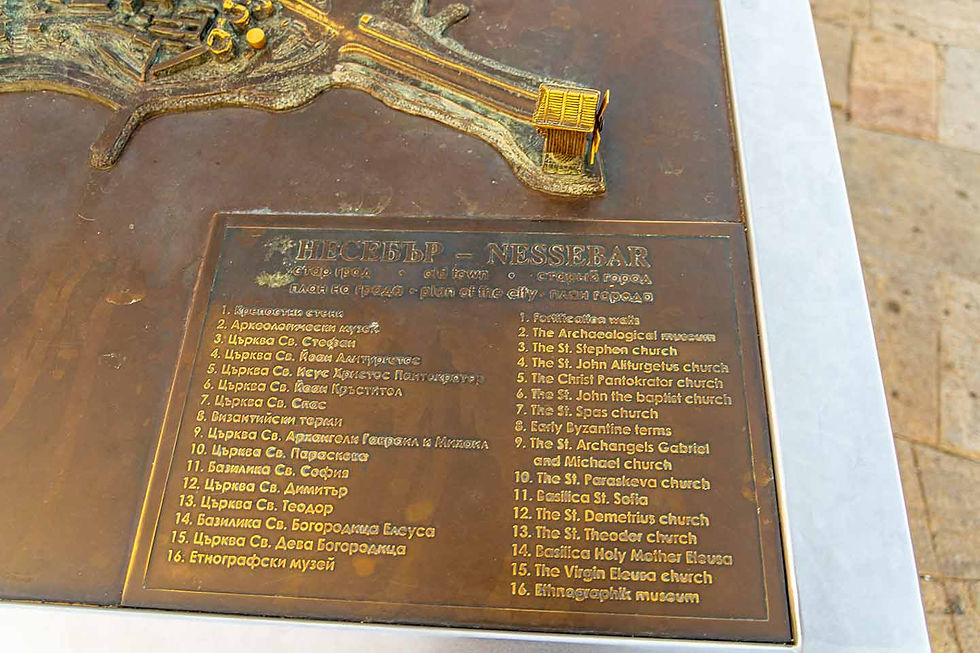
The presence of a living city that continues to develop, combined with these strict conservation requirements, creates a natural tension between development and preservation, which is a key challenge for the management of the site.
The fortress walls and defensive structures – a millennium of protection
The development of the defensive fortress walls of Nessebar is a direct and visible indicator of its strategic and economic value over the centuries.

The fortifications, built by different civilizations, are layered one on top of the other, telling the story of the city as a continuous struggle for survival.
Chronology of the fortifications
The foundations of the defense system of Nessebar were laid by the earliest settlers.

The first fortifications were built by the Thracians in the 8th century BC, using quarry stones and mud, parts of which have been preserved at a height of about two meters.

Later, during the ancient Greek period (late 5th - early 4th century BC), new walls were erected from large unjointed stone blocks with machined faces.

The most significant reconstruction, however, was carried out during the early Byzantine period (5th century), when new, massive defensive fortress walls were built, built in the characteristic opus mixtum technique, representing alternating belts of stone and brick.

The best preserved part of this period is the defensive fortress wall around the main gate, which was flanked by two rectangular and two semicircular towers, providing powerful protection.
Periods of destruction and reconstruction
The fortress system of Nessebar was subject to constant destruction and subsequent reconstruction, which is a direct consequence of its strategic importance. After the attack of the Avars in the late 6th and early 7th centuries, the walls were repaired. In 812, the fortress was destroyed by the troops of Khan Krum, but was subsequently rebuilt at the end of the 9th century with brick construction.

The last major reconstruction was carried out during the reign of Tsar Ivan Alexander, before the city fell under Ottoman rule. These continuous cycles of destruction and reconstruction are evidence that Nessebar was a key city, worth conquering by both sides in the Bulgarian-Byzantine conflicts.
Modern condition
Today, the defensive walls of Nessebar are visible remains of this rich and turbulent history. Parts of the wall built in the 1st century have been preserved, as well as impressive fragments of the fortifications erected in the 5th century.

These ruins are not just fragments of the past, but an architectural layer that clearly demonstrates the continuous evolution of the city fortification and is a testament to the millennia of its defense.
Churches and Basilicas – the Spiritual Landscape of Nessebar
Nessebar is known for its exceptional concentration of churches – over 40 in number, most of which were built in the Middle Ages.

This concentration of religious temples not only shows the piety of the population, but also implies the significant economic and spiritual wealth of the city, which allowed the financing of such large-scale religious construction.

Each church is a work of art, revealing the specifics of the construction techniques and cultural influences of its era.
The Old Metropolitan Church of St. Sophia
The Old Metropolitan Church of St. Sophia in Nessebar is the heart of the Old Town, its vivid symbol and testimony to the early Christian and Byzantine heritage.
If you liked my film, don't forget to subscribe to my YouTube channel, where many more amazing videos and films revealing the beauty of our homeland await you.

The old cathedral "St. Sophia" is one of the most impressive churches in the Old Town, located in the supposed old center of the settlement.

I tell and show you in detail about the Old Metropolitanate "St. Sophia" HERE.
Church "St. Stephen" (New Metropolitanate)
The Church "St. Stephen" is one of the most significant monuments of the Bulgarian cultural heritage in Nessebar.

I tell and show you more about the church of "St. Stephen" (the New Metropolis) HERE.
Church of "St. John Aliturgetos"
The church of "St. John Aliturgetos" is an exceptional monument of medieval Bulgarian architecture and the most interesting and picturesque church in Nessebar.

I tell and show you more about the church of Saint John Aliturgetos HERE.
Church of Saint Paraskeva
The Church of Saint Paraskeva is a key architectural monument that fits into the exceptional integrity of the settlement, a UNESCO World Heritage Site.

It is a partially preserved medieval Christian temple, known for its rich historical and cultural heritage.
I tell and show you in detail about the church of "St. Paraskeva" HERE.
Church of the Holy Archangels Michael and Gabriel
The Church of the Holy Archangels Michael and Gabriel is one of the most significant and impressive monuments of medieval architecture in Nessebar.

It is dated to the 13th or 14th century. Some researchers, such as Jonathan Bousfield, associate its construction specifically with the reign of Tsar Ivan Alexander (1331 - 1371).
I tell and show you in detail about the Church of the Holy Archangels Michael and Gabriel HERE.
Church of Christ Pantocrator
The Church of Christ Pantocrator is an emblem of a lost world. It represents one of the most significant testimonies to the flourishing of medieval Bulgarian and Byzantine architecture.
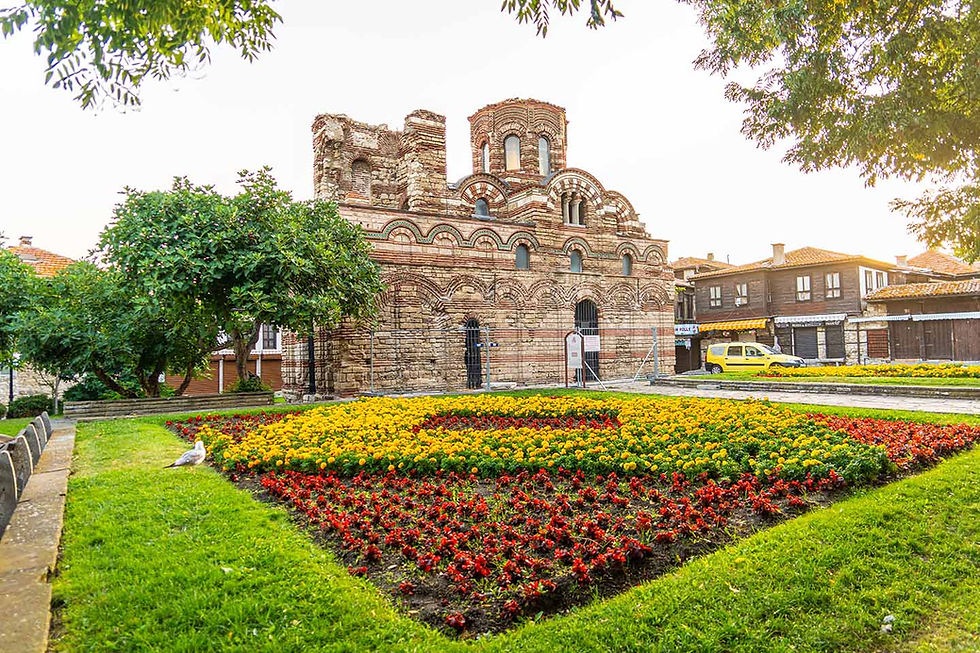
Its exceptional preservation distinguishes it from most other medieval monuments in Bulgaria and establishes it as a benchmark for construction from this period.
I tell and show you more about the Church of Christ Pantocrator HERE.
Church of St. John the Baptist
The Church of St. John the Baptist is a key site for studying the evolution of medieval church architecture in the Bulgarian lands.

It is distinguished as the only preserved building in the city that represents a transitional architectural type - from a basilica to a cross-domed church.
I tell and show you in detail about the church of St. John the Baptist HERE.
Church of St. Spas
The Church of St. Spas was built at the beginning of the 17th century, it is one of the few preserved Christian churches erected during the Ottoman rule.
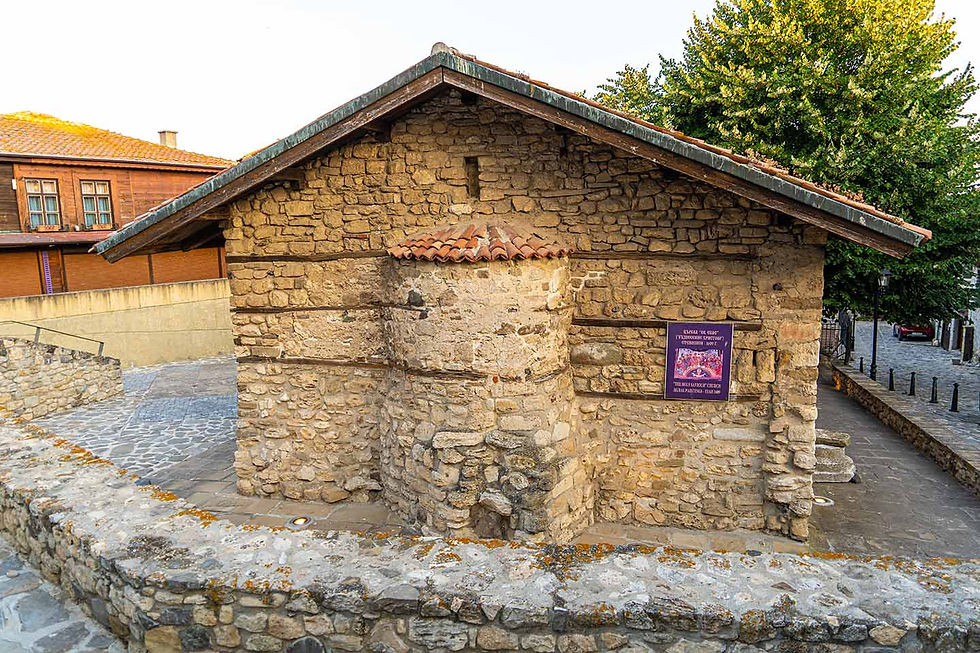
Its modest external architecture, which contrasts sharply with its richly decorated interior, makes it an emblematic witness to the historical conditions and the efforts to preserve faith and cultural identity in a complex and oppressive period.
I tell and show you in detail about the Church of St. Spas HERE.
Basilica of the Holy Virgin Eleusa (Tenderness)
The oldest church in Nessebar - the Basilica of the Holy Virgin Eleusa (Tenderness) is one of the most important historical and archaeological monuments in Nessebar.

This site is not just another tourist attraction, but a key archaeological monument, the study of which reveals significant layers of the early Christian and medieval history of the city. Due to its age, which positions it as probably the oldest Nessebar church, it offers valuable data on the cultural and religious life of ancient Messembria and the Byzantine period.
I tell and show you in detail about the Basilica of the Holy Virgin Eleusa (Tenderness) HERE.
A cross-domed medieval church from the 10th century
The cross-domed medieval church from the 10th century, located north of the Old Metropolis of St. Sophia, was declared an archaeological monument of national importance in 1992.

Revival Church "Holy Assumption of the Virgin Mary"
Built in 1873, this is the only functioning church on the territory of the Old Town of Nessebar.

Early Byzantine Baths
The construction of public baths (thermae) reflects the high level of urbanization of Nessebar during the Byzantine period. These early Byzantine baths were built during the reign of Emperor Justinian I the Great (527–565).

The fact that the construction of the baths was the work of one of the most significant emperors in Byzantine history is indicative of the exceptional importance of Mesembria within the empire. Archaeological excavations have revealed five warm rooms, a central hall and a corridor.

According to historical chronicles, in 680, Emperor Constantine IV the Perpetrator was treated in these baths.
This specific historical fact implies that the baths were not just a routine public facility, but an object of exceptional importance, accessible and used by the highest echelon of imperial power, which further emphasizes the strategic and even symbolic role of Nessebar.
Ancient water supply system
The presence of a developed public infrastructure is further evidence of the importance of Nessebar as an urban center.

It is assumed that even in antiquity the city had a complex water supply system, which included aqueducts from the mainland to the island.
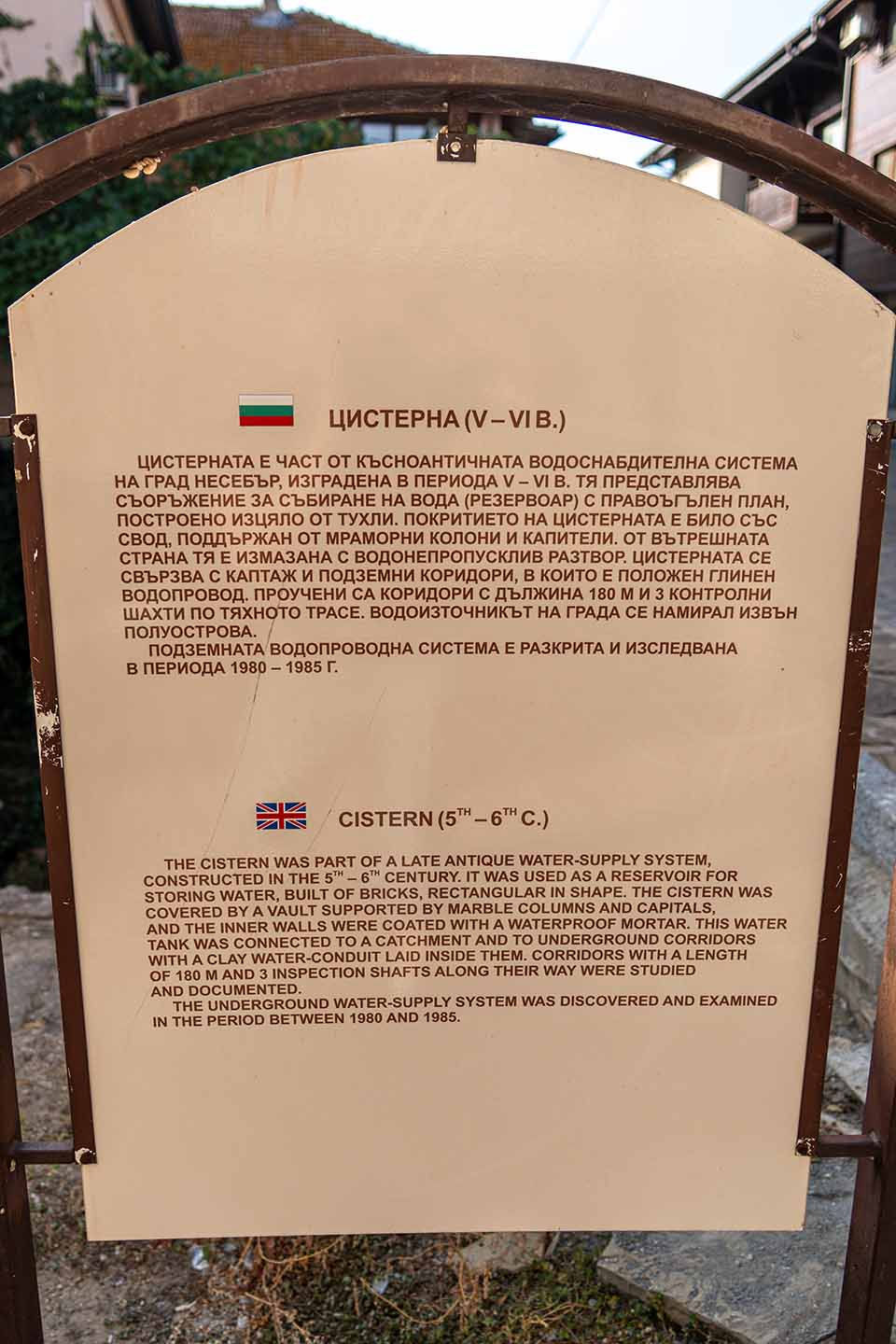
In addition, other elements of ancient urbanization have been attested, such as a sewage system, an amphitheater, and numerous temples.

These discoveries show that since ancient times, Nessebar was not just a fortified settlement, but a highly organized and functional urban center.

Nessebar is a unique city that is far more than just a tourist destination.

It is a multilayered palimpsest, in which each layer – from the Thracian foundations and the Greek polis, through the Byzantine fortifications and churches, to the Bulgarian National Revival houses – contributes to its outstanding universal value, recognized by UNESCO.

Nessebar is an example of exceptional urban continuity, where political and military clashes do not lead to destruction, but to continuous upgrading and adaptation of the urban environment.

Its fortress walls tell the story of millennia of defense, while its many churches testify to the city's spiritual and economic prosperity.
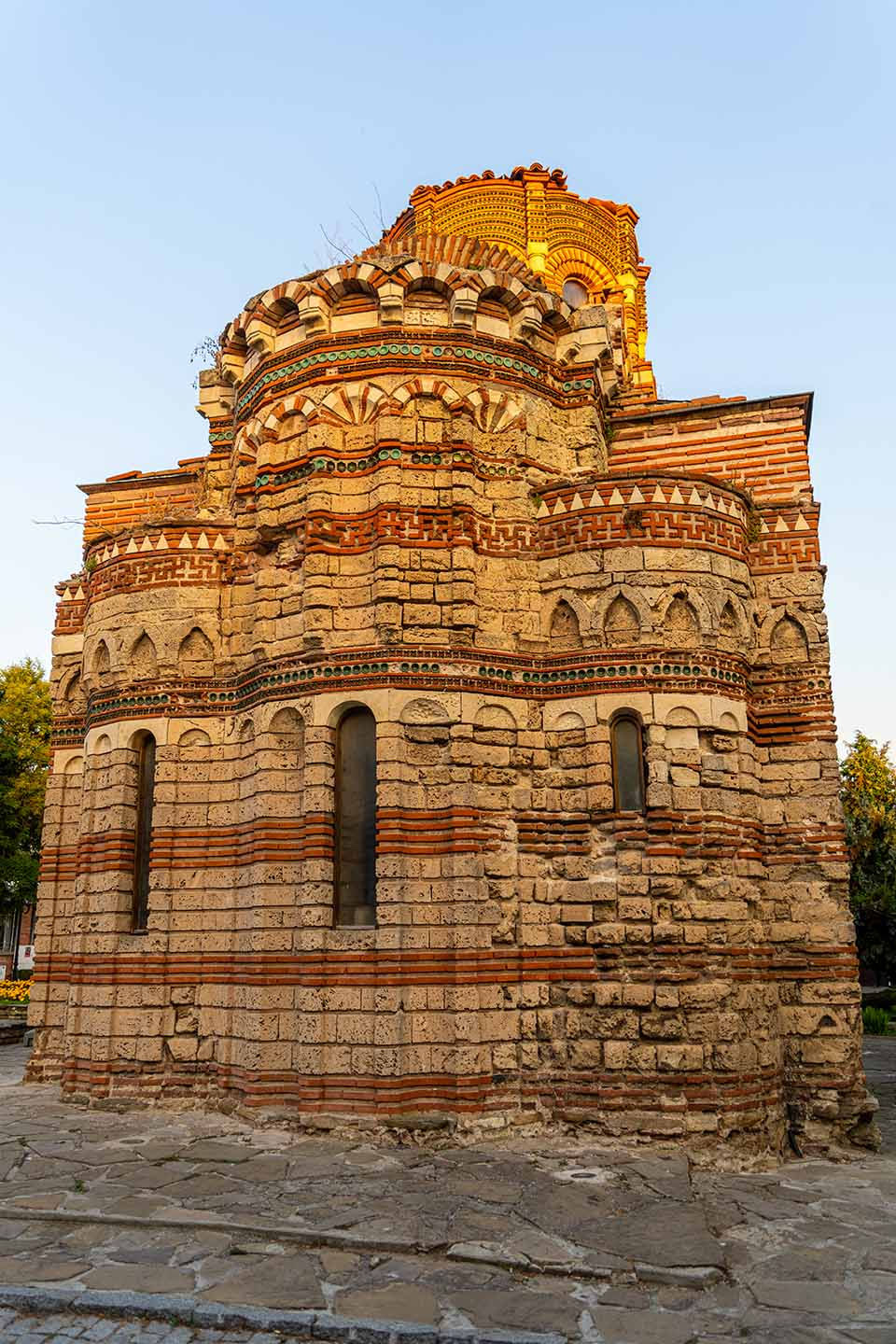
The presence of complex public infrastructure such as thermae and a water supply system underscores its status as an important center within the Roman and Byzantine empires.

Ultimately, Nessebar becomes a symbol of sustainability and continuity.
Although it is an open museum with ancient artifacts, it is also a living city that continues to develop.
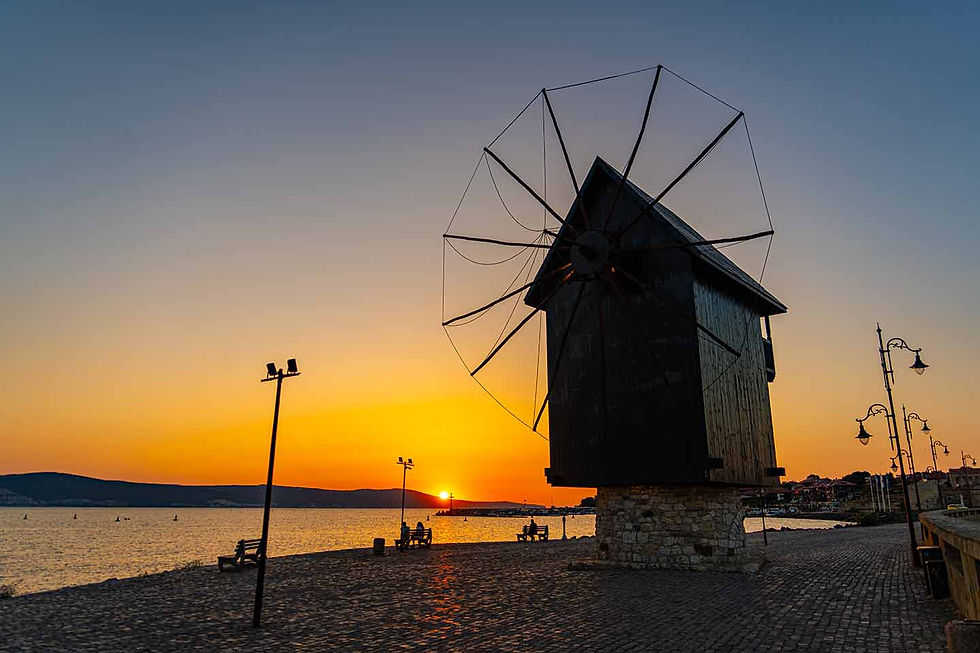
This harmonious coexistence between past and present makes it not just a cultural heritage site, but an inspiring example of how a city can preserve its identity while adapting to the modern world.
The territory of the ancient town of Nessebar was declared a museum, tourist and resort complex Architectural-urban and archaeological reserve by Decree of the Council of Ministers No. 243 of July 18, 1956.
The territory of the ancient town of Nessebar was declared an architectural-historical reserve and tourist site by Ordinance No. 8 of the Council of Ministers and the Bulgarian Academy of Sciences, promulgated in the State Gazette No. 9 of 1981
The ancient town of Nessebar was declared an Archaeological Reserve and a Historical Settlement – Architectural, Construction and Urbanistic NCC by Order No. RD9R-14 of June 5, 2015 of the Council of Ministers, promulgated in the State Gazette, issue 51 of 2015
How to get to Nessebar?
Nessebar is located:
412 kilometers (about 3 hours and 59 minutes by car) from the capital
277 kilometers (about 2 hours and 55 minutes by car) from the city of Plovdiv
100 kilometers (about 1 hour and 48 minutes by car) from the city of Varna
35 kilometers (about 36 minutes by car) from the city of Burgas
You are reading an ad-free blog – fully focused on the content!
I remind you that you can read all my posts here – in "Photo Moments", without being interrupted by a single annoying ad, because "Photo Moments" is a place without ads!
I made the important decision to make "Photo Moments" ad-free so that my site can load much faster, the content I present to you can be as clean as possible and your experience in "Photo Moments" can be the best possible!
If you appreciate everything I do, you can support me HERE or by following the gold star below.
Thank you!
And finally, my dear friends,
you should not miss to check out
the special album with photo moments –
discovered, experienced, captured and shared with you!

Comments